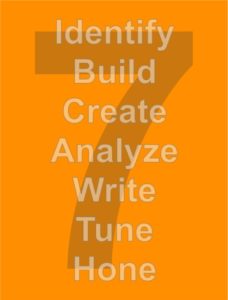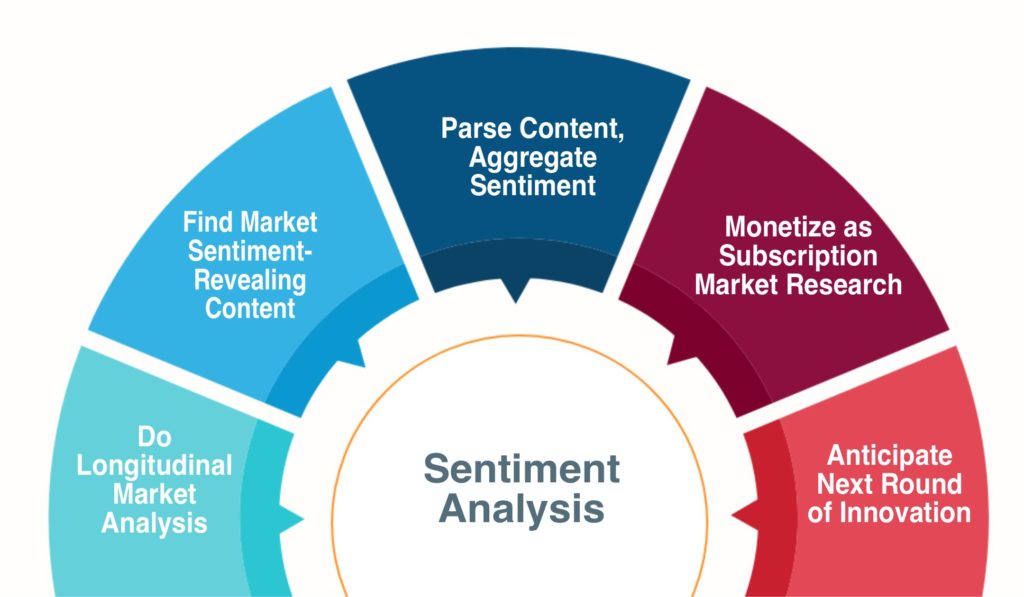The last decade has seen Machine Learning-based sentiment analysis emerge as a promising approach to market research and business intelligence. Sentiment analysis has helped CEOs and Chief Marketing Officers expand and diversify revenue, make their sales forces more productive, spot early market trends, build differentiation and brand, even identify potential leads–across push and pull channels.
To date sentiment analysis has worked particularly well for B2C marketers that can scrape content from public domain sites like chat rooms and support forums. For example, see an impressive, far-reaching market analysis in the Economist of affluent consumer sentiment about personal financial services offered by banks and fintechs—such as lines of credit for “friends and family” investing. All the data in the Economist analysis was scraped from chat rooms that target affluent users of financial services.
B2B marketers will never be able to get their hands on direct voice-of-the-buyer content such as B2C marketers can use to analyze market sentiment. But specialized service providers are starting to work around this. They are generating content designed to be raw material for B2B sentiment analysis by extrapolating, modeling, synthesizing and back testing content, starting with public domain text.
Sentiment analysis is racing ahead, becoming a compelling complement to (and possibly replacement for) traditional B2B market research like surveys, interviews, and focus groups.
Sentiment Analysis Basics
Sentiment is your customers’ and prospects’ underlying, often emotion-tinged opinions, biases, values and attitudes, revealed via text or other medium. Sentiment can influence B2B buying decisions, often decisively.
Machine Learning-based sentiment analysis combines:
- A model consisting of keywords, sample content, “NOT” text etc.– designed to identify public domain content that reveals the market sentiment you are tracking.
- Expert human editorial analysis and writing—to parse and synthesize the sentiment revealed by the content.
Together, technology and expert human editorial can discover and analyze market sentiment on a scale and with a precision no human could achieve. The payoff from sentiment analysis? Signals of shifts in industry player’s mindsets, messaging and thinking—business intelligence that a well-positioned marketer can take advantage of.
Sentiment analysis can be deployed at regular intervals to read market sentiment longitudinally while traditional techniques produce only “snapshots in time.” Sentiment analysis yields better predictive and prescriptive market insight, with more measurability and objectivity—at lower cost. It also benefits:
- Buyers: companies that are considering a major purchase and want to understand market and customer sentiment toward a vendor or group of vendors—compared to their competitors and substitutes.
- Investors: sentiment analysis helps them identify the industries, subindustries and niches best aligned with current and future market sentiment.
Sentiment analysis is not only far more scalable than traditional business intelligence methods. It also avoids the risks of:
- Distraction that can result from the presence of a researcher doing interviews or surveys.
- Distortion that can occur when subjects know their responses are being analyzed.
- Subjectivity in analyzing data and results.
A 7 Step Process to Pilot Machine Learning-based Sentiment Analysis

- Identify the market/audience/sentiment you are targeting to track and understand
- Build and iteratively refine a model (consisting of key words, sample text etc.) to specify the types of content likeliest to reveal or be relevant to the market sentiment you are targeting
- Incorporate the model into a content curation funnel
- Include in the content funnel marketing/sales collateral from companies in the industry—to track changes in their explicit and (especially) implicit brand and product messaging.
- Counter-balance the marketing/sales messaging in the funnel with an eclectic range of more objective sources like industry news, market analysis reports and best practices in comparable industries.
- Identify for analysis by human editors the content that may reveal market sentiment
- Write up findings in market intelligence “alert” format suitable for premium priced subscription analytics
- Continually tune the analytics to find content that is revealing of the sentiment you’re targeting
- Continually tune the analytics to find content that is revealing oUse increasingly powerful analytics tools from a growing number of companies like SuccessKPI, Repustate or Clarabridge.
- Eventually consider advisory services to help you address the challenges that the sentiment analysis reveals.
- Hone a repeatable editorial process and workflow
- Develop an iterative process to tune content models against a constant stream of new data.
- Measure improvement in how well your models are finding content that reveals your target market sentiment.
- Implement an editorial process to review, edit, and tag content and take advantage of the emerging ecosystem of Machine Learning-based AI prep services.

More Machine Learning and Sentiment Analysis Innovation Is Coming
It is hard to predict the direction of a market as dynamic as Machine Learning and sentiment analysis. But over the next few years sentiment analysis may include:
- Tools to integrate: (1) Sentiment analysis-based analytics, with (2) advice from executives who have successfully run companies in your industry. Newport LLC is developing a prototype proof of concept of this service.
- Industry-specialized content from trade and technical publications that can be licensed and repurposed—to build models to find content that reveals or is relevant to the market sentiment you seek to track.
- Metrics to help detect early signals of changes in sentiment across industries and subindustries—to identify unexpected break points in sentiment e.g. across subgroupings of an industry. These metrics will be:
- Designed to surface market niches that traditional or new industry players can target.
- Sold as premium priced subscription research.
- Distributed via a channel consisting of industry-specialized market research firms.
Start Now
B2B marketers and their marketing service providers and agencies should learn more about how emerging Machine Learning-based sentiment analysis can raise your market research/business intelligence game— lifting your entire marketing strategy and execution.
Investors should consider opportunities in the ecosystem of third-party sentiment analysis and AI data service providers. Large global companies are dedicating more and more resources to strategic initiatives to deploy AI in promising new ways. Service providers are innovating in how they identify, prep and process AI-ready content data. Vendors funded by VC’s and other investors offer low-cost, offshore fractional workforces from which to source these services.
Machine Learning-based sentiment analysis is here to stay.
Understand what it can do for you!

